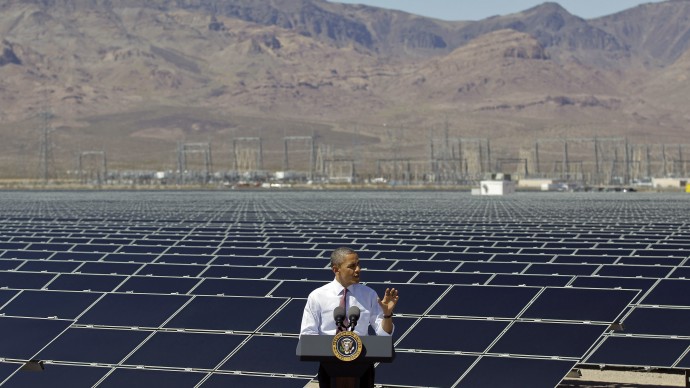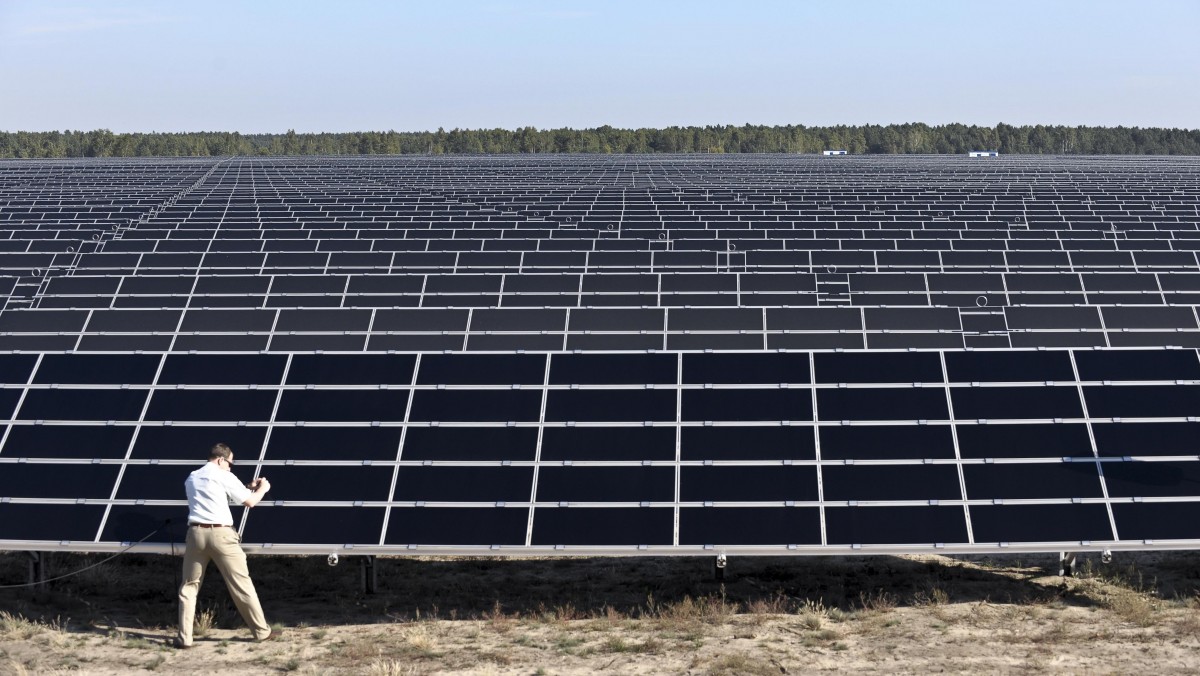
Costs are down, profits are up, and renewable energy is contributing an increasing amount of electricity to the world’s energy grids, according to a report published Monday by the United Nations. With that information in mind, governments must now “re-evaluate investment priorities, shift incentives, build capacity and improve governance structures” to shift towards a green energy system, the authors urge.
The report, conducted by the United Nations Environment Programme (UNEP) and Bloomberg New Energy Finance, reveals renewable energy sources such as wind and solar are showing “many positive signals of a dynamic market that is fast evolving and maturing,” stated Achim Steiner, the U.N. under-secretary-general and executive director of UNEP.
While the industry has been struggling to gain momentum over the previous four years, 2013 saw a 54 per cent increase in energy stocks – “an improvement that took place as many companies in the solar and wind manufacturing chains moved back towards profitability after a painful period of over-capacity and corporate distress.”
“While some may point to the fact that overall investment in renewables fell in 2013,” said Steiner, this is actually largely because less money was needed to run the industry, whose costs continue a downward trend.
As countries such as China and Japan led the renewable energy boom, overall renewables accounted for 44% of 2013’s “newly installed generating capacity.”
“This should give governments the confidence to forge a new robust climate agreement to cut emissions at the 2015 climate change conference in Paris,” said Steiner.
These advances have a drastic impact on the climate, the report notes. “Were it not for renewables, world energy-related CO2 emissions would have been an estimated 1.2 gigatonnes higher in 2013,” it states. “This would have increased by about 12 per cent the gap between where emissions are heading and where they need to be in 2020 if the world is to have a realistic prospect of staying under a two degree Centigrade temperature rise.”
“A long-term shift in investment over the next few decades towards a cleaner energy portfolio is needed to avoid dangerous climate change,” said Steiner.
Michael Liebreich, Chairman of the Advisory Board for Bloomberg New Energy Finance, added: “Lower costs, a return to profitability on the part of some leading manufacturers, the phenomenon of unsubsidized market uptake in a number of countries, and a warmer attitude to renewables among public market investors, were hopeful signs after several years of painful shake-out in the renewable energy sector.”
This article first appeared on Common Dreams.


